- Entity Detection and Recognition
The ACE Entity Detection and Recognition task(EDR) requires that certain specified types of entities that are mentioned in the source language data be detected and that selected information about these entities be recognized and merged into a unified representation for each detected entity.
1.1 Entity
Entity output is required for each document in which the entity is mentioned. This output includes information about the attributes and mentions of the entity. Entity attributes are currently limited to the entity type, the entity subtype, the entity class, and the name(s) used to refer to the entity.
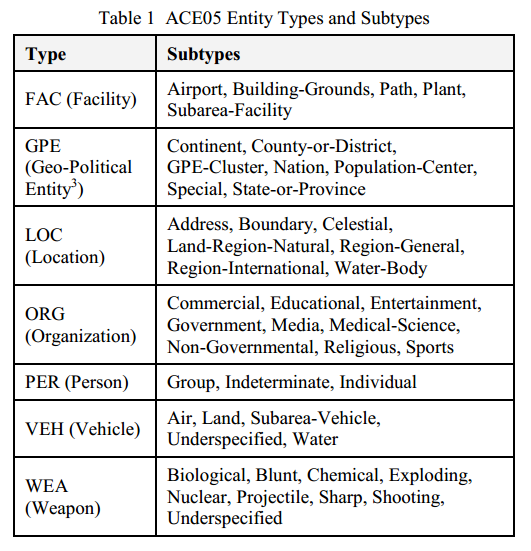
1.2 Entity Mentions
All mentions of ACE entity are to be detected and output along with the entity attributes. It is important to output every mention to get full value for each entity. The output for each entity mention includes the mention type, the location of its head and its extent, and optionally the mention role and style of the mention. Mention style is either literal or metonymic. This is currently encodeed in the apf file format as an attribute called “metonymy_mention”, which is either true(for metonymic style of reference) or false(for literal style of reference). The default style is literal.
- Relation Detection and Recognition
The ACE Relation Detection and Recognition task (RDR) requires that certain specified types of relations that are mentioned in the source language data be detected and that selected information about these relations be recognized and merged into a unified representation for each detected relation.
2.1 Relations
An ACE relation is a relation between two ACE entities, which are called the relation argument. Some relations are symmetric, meaning that the ordering of the two entities does not matter(e.g., “partner”). But for asymmetric relations the order does matter(e.g., “subsidiary”) and for these relations the entity argument must be assigned the correct argument role.
Relation output is required for each document in which the relation is mentioned. This output includes information about the attributes of the relation, the relation argument, and the relation mentions. Relation attributes are the relation type, subtype, modality and tense. Relations may have only one type and one subtype.
2.2 Relations Arguments
Relation arguments are identidied by a unique ID and a role. The roles of the two entities being related are “Arg-1” and “Arg-2” and the correct assignment of these roles to their respective arguments is important, except for symmetric relations. These may be only one Arg-1 entity and one Arg-2 entity. In addition to the two principal entity arguments there may be one or more temporal (timex2) arguments, and it is important to include these arguments in the relation inorder to receive full value for the relation.
2.3 Relation Mentions
A relation mention is a sentence or phrase that expresses the
relation. The extent of the relation mention is defined to be the
sentence or phrase within which the relation is mentioned. A
relation mention must contain mentions of both of the entities
being related. Although recognition of relation mentions is not
evaluated, it is one of the ways that system output relations are
allowed to map to reference relations. Thus correct recognition
of relation mentions is potentially helpful in evaluation.








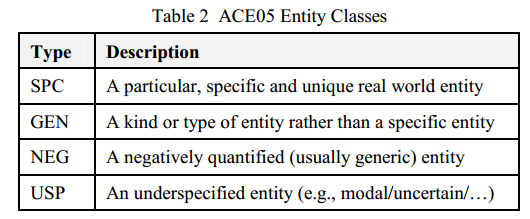
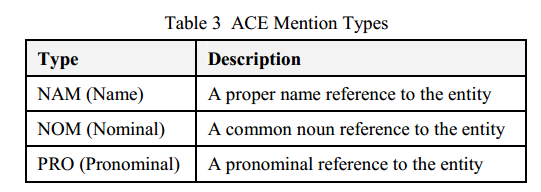
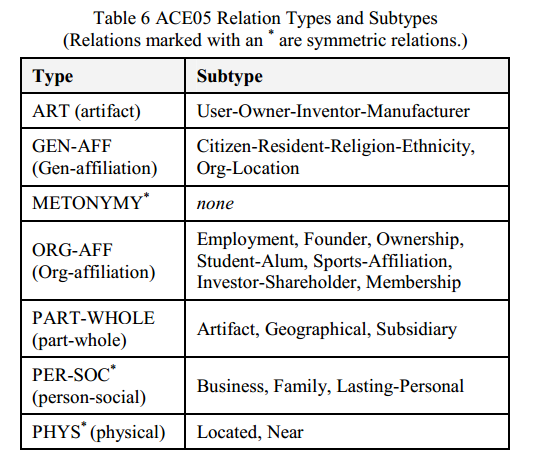
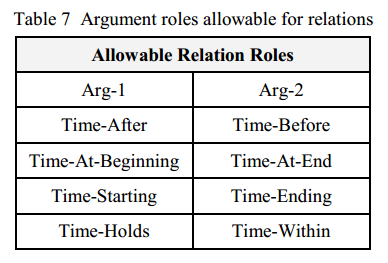














 4910
4910

 被折叠的 条评论
为什么被折叠?
被折叠的 条评论
为什么被折叠?








